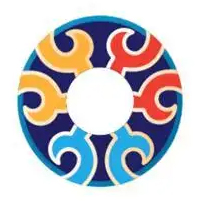Discover the Beauty of Chinese Arts and Crafts - Pearl Necklace with Cloisonné
01 Cloisonné: A National Treasure
Cloisonné, formally known as 'copper base wire inlay enamel' and commonly known as 'enamel', is also known as 'inlaid enamel'. It is an object made by putting various patterns made of soft flat copper wire on a copper base and then filling it with enamel glaze and firing it. It is named 'Cloisonné' because it was popular during the Jingtai period of the Ming Dynasty and the craftsmanship was quite mature. The enamel glaze is mostly blue, hence the name 'Cloisonné'.
During the Ming and Qing dynasties, emperors had specialized institutions to produce metal cloisonné for imperial use. From the Xuande and Jingtai periods of the Ming Dynasty to the Kang, Yong, Qian, and Jiaqing periods of the Qing Dynasty, Cloisonné was produced. This made Cloisonné one of the 'Four Famous Actors' in Beijing's arts and crafts, and it was also included in the 'Eight Marvels of Yanjing'.
02 Auction Fine: One piece of Cloisonné, ten boxes of official kiln porcelain
Cloisonné is made of precious materials and the craftsmanship is extremely difficult. It is the only art category that is not shared by officials and the public, and it is exclusively for the emperor's enjoyment. Most of the Cloisonné objects are collected in the Palace Museum, with only over 6,000 pieces, which is a small part of its important collection. This is enough to prove the value and rarity of Cloisonné.
If there is no cloisonné in the collection, even if all other treasures in the world are collected, it is in vain.
03 Fine ornaments: Antique charm, fragrant and colorful
Cloisonné not only includes bottles, plates, bowls, incense burners, round boxes, incense holders, and tripods, but also flower pots, wash basins, charcoal pots, lamps, candle holders, jars, pots, and more. Whether placed indoors or outdoors, cloisonné can bring a unique charm of antique charm, fragrance, and color.
04 Manufacturing process: Precise and magnificent
The manufacturing process of cloisonné can be summarized as seven steps: making the base, wire bending, soldering, dotting, firing, polishing, and gilding, each of which involves many details. The glaze is made from natural minerals such as agate, lapis lazuli, and turquoise, some of which are even priced at tens of thousands of yuan.
Dotting is one of the most magical aspects of making cloisonné. The design patterns do not indicate colors, they are all in the mind of the dotting master. Dotting is not done all at once, it also requires firing, known as "firing the glaze", and each dotting needs to undergo a firing process until the glaze is consistent with the wires, which signifies completion.
After pickling, degreasing, and sand-polishing, cloisonn is gilded, allowing gold to adhere to the metal embryo, enhancing brightness and protection.
05
Cloisonn inherits the solidity of bronze ware, the gorgeousness and dazzle of porcelain, and the meticulousness of painting skills. It used to be known as 'court art' and has now become intangible cultural heritage. Cloisonn is not just an exquisite object but also represents the wisdom and wonder encapsulated in ancient and rare Chinese craftsmanship.

